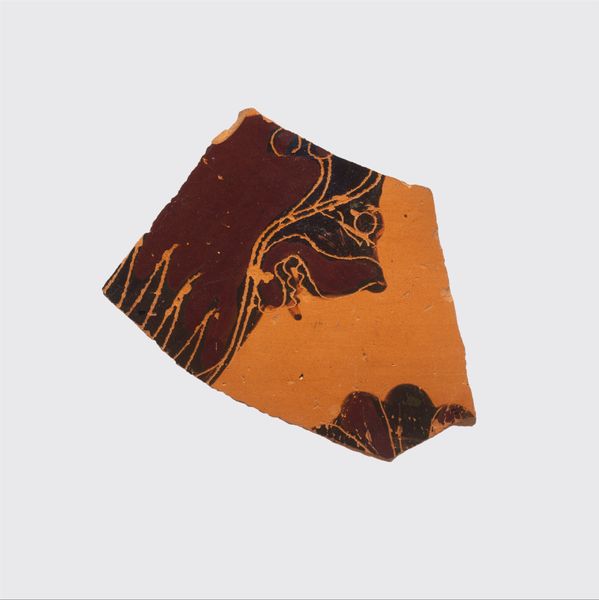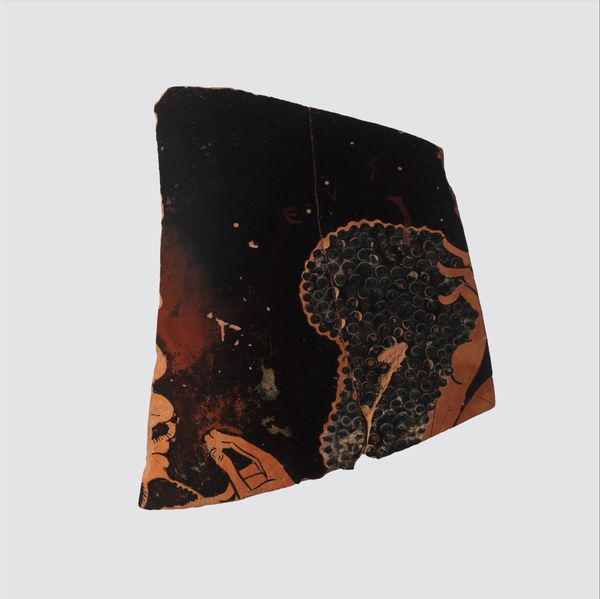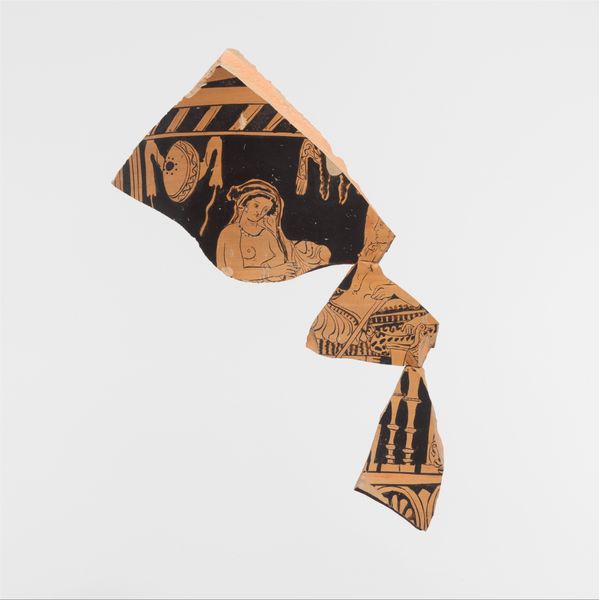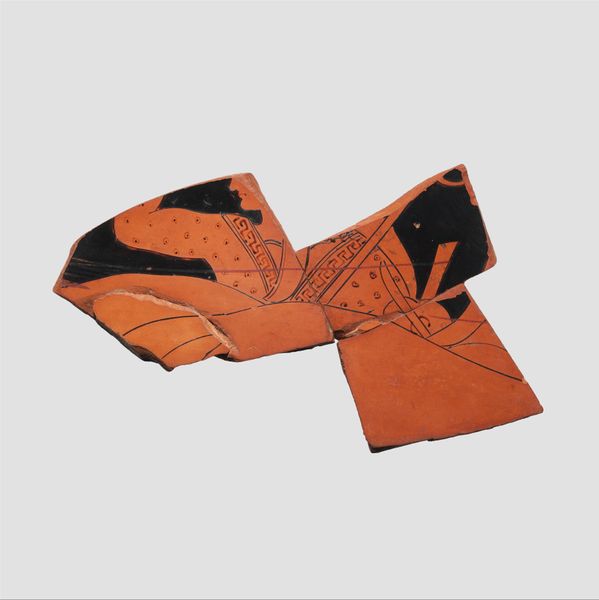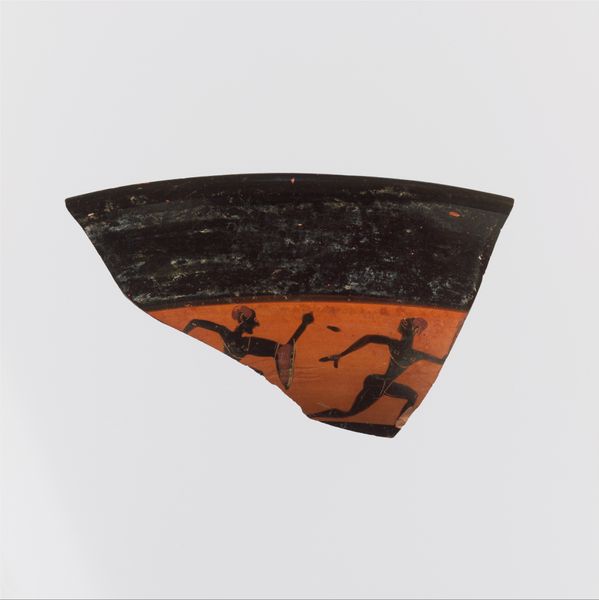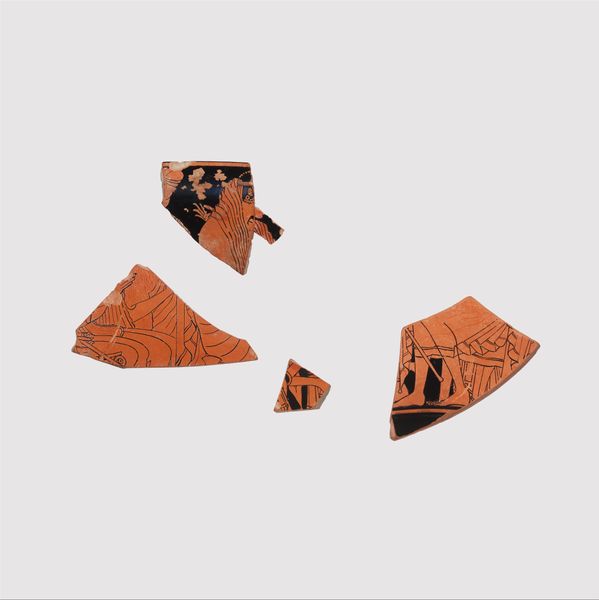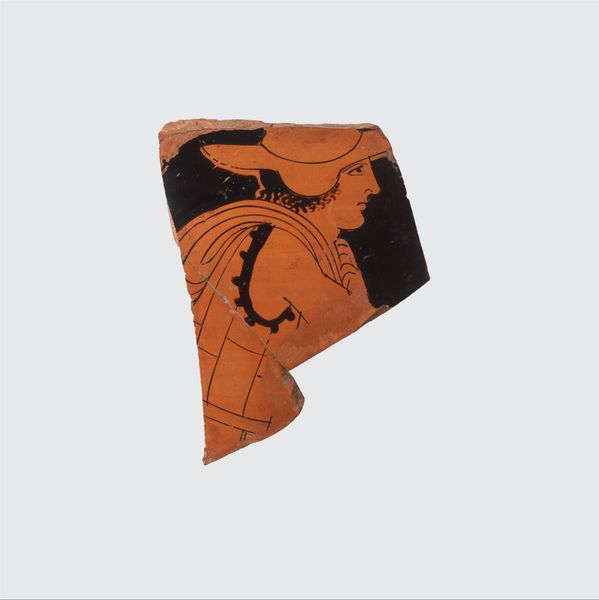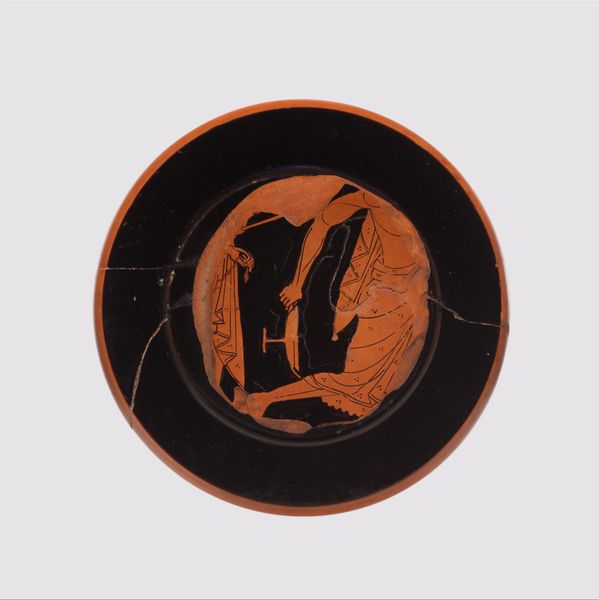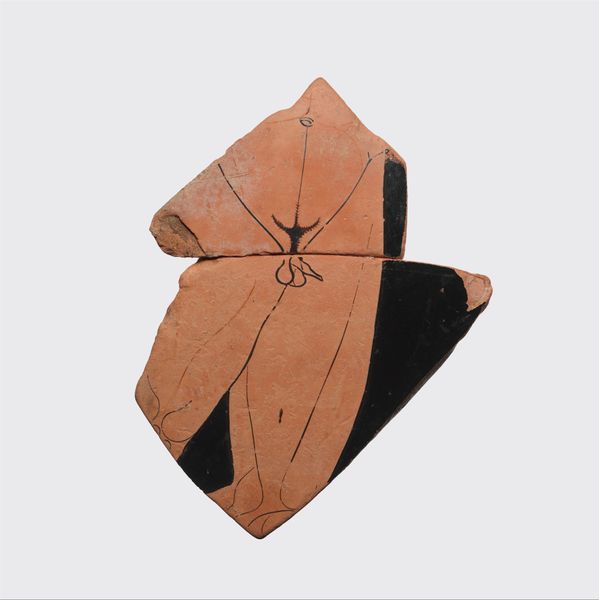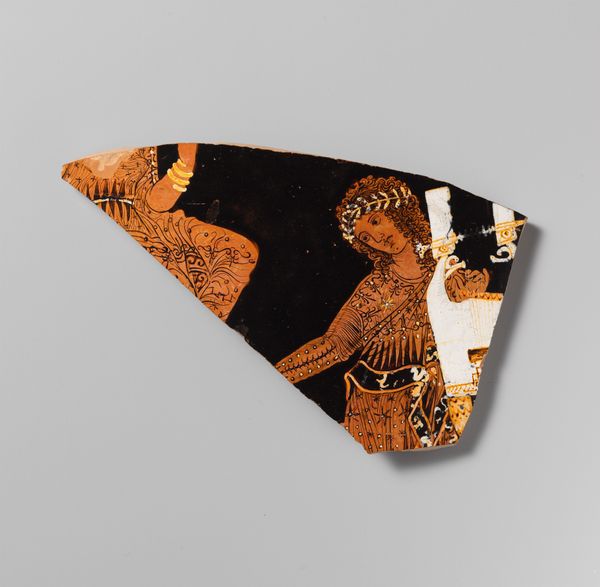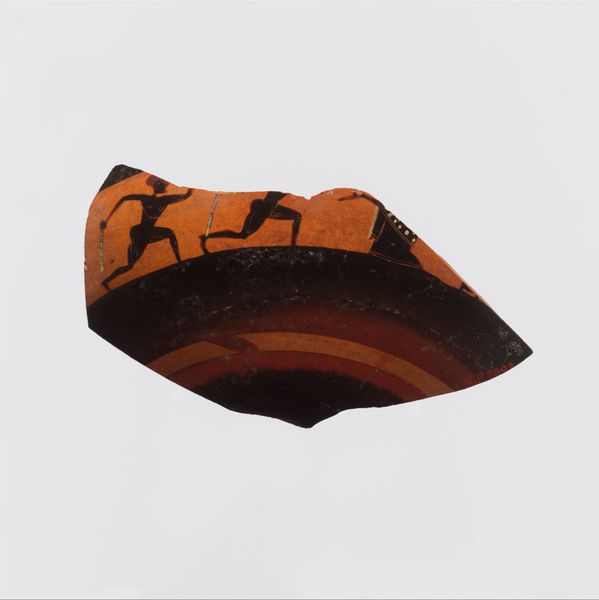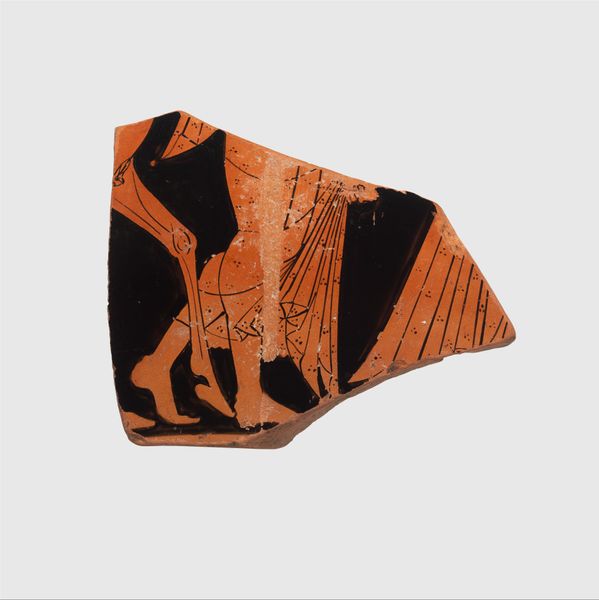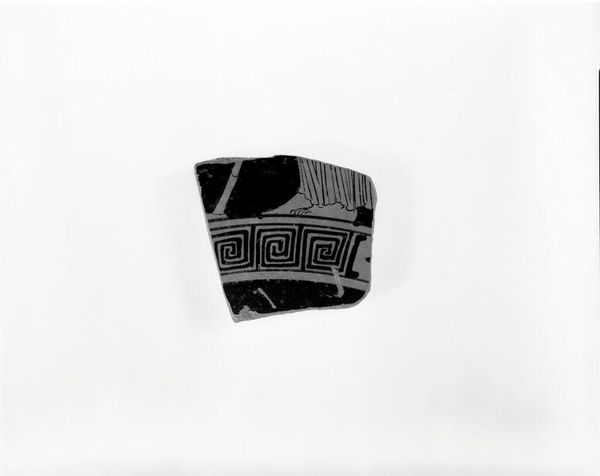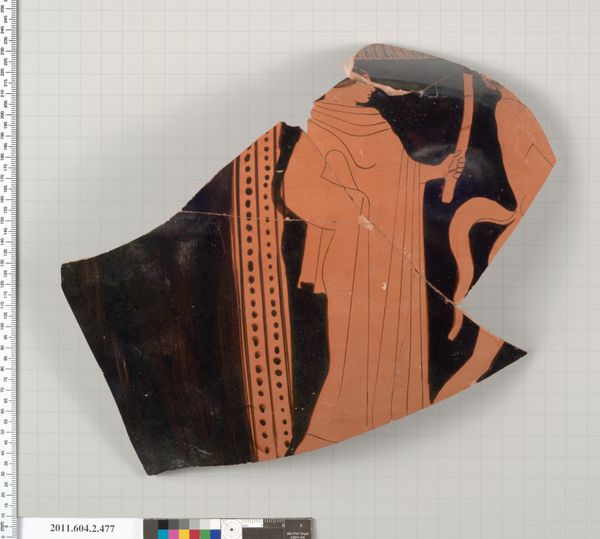
ceramic
#
greek-and-roman-art
#
landscape
#
ceramic
#
vase
#
figuration
#
roman-art
#
ancient-mediterranean
Dimensions: .a: 2 3/4 × 3 1/16 × 3/16 in. (6.9 × 7.9 × 0.4 cm) .b: 1 9/16 × 1 9/16 × 1/8 in. (4 × 3.9 × 0.4 cm) .c: 1 5/16 × 2 × 1/8 in. (3.4 × 5 × 0.3 cm) .d: 1 1/2 × 1 3/8 × 1/8 in. (3.9 × 3.4 × 0.4 cm) .e: 5/8 × 1 7/16 × 3/16 in. (1.5 × 3.6 × 0.5 cm) .f: 2 3/4 × 3 1/16 × 3/16 in. (6.9 × 7.9 × 0.4 cm) .g: 1 × 2 5/8 × 3/16 in. (2.6 × 6.7 × 0.5 cm) .h: 1 1/2 × 1 5/16 × 1/8 in. (3.8 × 3.3 × 0.3 cm)
Copyright: Public Domain
These fragments of a terracotta amphora jar are from ancient Greece and were created by an anonymous artist. The fragments offer us a glimpse into the social and cultural context of the time. The image creates meaning through visual codes and cultural references typical of ancient Greek pottery. The black figure technique, with its detailed silhouettes and use of incision, was a common style during the Archaic and Classical periods. These vessels were not merely decorative; they were integral to social life, used for storage, transportation, and ceremonial purposes. The scenes painted on these amphorae often depicted myths, religious rituals, and everyday life. It is a pity we can’t see the whole vessel! The study of such fragments involves careful research into archaeological reports, museum collections, and scholarly publications. Understanding the context in which these objects were made and used allows us to appreciate their significance as cultural artifacts. The meaning of art is always contingent on its social and institutional context.
Comments
No comments
Be the first to comment and join the conversation on the ultimate creative platform.
